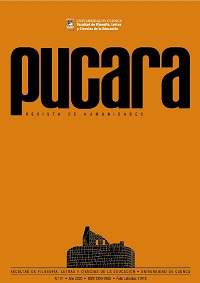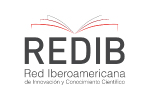Transmedia exploitation in the current crime novel: Narrative and promotional strategies
DOI:
https://doi.org/10.18537/puc.31.03Keywords:
narrativas transmedia, novela negra, transmedia literario, crossmedia, universo narrativo, promoción editorialAbstract
This work aims to analyze the application of transmedia and crossmedia narratives to the current noir novel to offer a global vision of its transmedia exploitation, trying to verify its immersion in the process of communicative change and its adaptation to these new forms of communication sponsored by the culture of media convergence. For this, a study of representative cases of each relevant geographic area for the genre was proposed, in which a triangulation was carried out between the content analysis of the original product and its extensions, through the study of the media, narrative aspects, involvement of the user, and the identification of the fundamental principles of transmedia narratives. The use of promotional strategies based on expansion to other formats is manifested, mainly adaptation, with little extension of the narrative universe, and how they have favored the involvement of the public in the literary framework, without developing a complete transmedia exploitation.
Downloads
References
Atarama-Rojas, T., & Menacho-Girón, N. (2018). Narrativa transmedia y mundos transmediales: Una propuesta metodológica para el análisis de un ecosistema mediático, caso Civil War. Revista de Comunicación, 17(1), 34-56.
Atarama-Rojas, T., & Requena Zapata, S. (2018). Narrativa transmedia; Análisis de la participación de la audiencia en la serie 13 Reasons Why para la aproximación al tema del suicidio.
Bainbridge, J. (2014). ‘It is a Pokémon world’: The Pokémon franchise and the environment. International Journal of Cultural Studies, 17(4), 399-414.
Bardin, L. (1991). Análisis de contenido (Vol. 89). Ediciones Akal.
Bertetti, P. (2014). Transmedia Critical. Toward a Typology of Transmedia Characters. International journal of communication, 8, 20.
Cáceres, P. (2008). Análisis cualitativo de contenido: una alternativa metodológica alcanzable. Psicoperspectivas. Individuo y sociedad, 2(1), 53-82.
Carrizo, J. G., & Díaz, O. H. (2015). Propuesta de un modelo genérico de análisis de la estructura de las narrativas transmedia/ Proposal for a generic model of analysis of the structure of transmedia narratives. Revista ICONO14 Revista científica de Comunicación y Tecnologías emergentes, 13(2), 260-285.
Davis, C. H. (2013). Audience value and transmedia products. Media innovations, 175-190.
Fagerjord, A., & Kueng, L. (2019). Mapping the core actors and flows in streaming video services: what Netflix can tell us about these new media networks. Journal of Media Business Studies, 16(3), 166-181.
Federación del gremio de editores (2011). Barómetro de Hábitos de Lectura y Compra de Libros en 2010.
Fernández Castrillo, C. (2014). Prácticas transmedia en la era del prosumidor: Hacia una definición del Contenido Generado por el Usuario (CGU). Cuadernos de Información y Comunicación, 19, 53-67. DOI: 10.5209/rev_CIYC.2014.v19.43903
Freeman, M. (2015). Up, up and across: Superman, the Second World War and the historical development of transmedia storytelling. Historical Journal of Film, Radio and Television, 35(2), 215-239.
García Carrizo, J., & Heredero Díaz, O. (2015). Propuesta de un modelo genérico de análisis de la estructura de las narrativas transmedia / Proposal for a generic model of analysis of the structure of transmedia narratives. Revista ICONO14 Revista Científica De Comunicación Y Tecnologías Emergentes, 13(2), 260-285. https://doi.org/10.7195/ri14.v13i2.745
Guerrero-Pico, M., & Scolari, C. A. (2016). Narrativas transmedia y contenidos generados por los usuarios: el caso de los
crossovers. Cuadernos. info, (38), 183-200.
Hellín-Ortuño, P., Trindade, E., & García-López, J. (2019). LatinAmerican perceptions on definitions and arguments about crossmedia and transmedia in advertising. El profesional de la información (EPI), 28(4).
Hutcheon, L. (2012). A theory of adaptation. Routledge.
Ibarra, K. A. (2016). El impacto de la crisis en la industria cinematográfica en Europa. Estudios sobre el mensaje periodístico, 22(1), 127 -141.
Ibrus, I., & Scolari, C. A. (2012). Crossmedia innovations. Peter Lang GmbH.
Jenkins, H. (2009). The revenge of the origami unicorn: Seven principles of transmedia storytelling. Confessions of an aca-fan, 12.
Jenkins, H., & Deuze, M. (2008). Convergence culture. Convergence: The International Journal of Research into New Media Technologies. Sage Publications London, Los Angeles, New Delhi and Singapore. Vol 14(1): 5–12. DOI: 10.1177/1354856507084415
Kaplan, A. M., & Haenlein, M. (2010). Users of the world, unite! The challenges and opportunities of Social Media. Business
horizons, 53(1), 59-68.
Kimmel, M. (2014). Men who love women: Pro-feminist masculinities in the Millennium trilogy. In Women’s Studies International Forum (Vol. 46, pp. 83-87). Pergamon.
Kotler, P., Kartajaya, H., & Setiawan, I. (2016). Marketing 4.0: Moving from traditional to digital. John Wiley & Sons.
Leitch, T. (2012). Adaptation and Intertextuality, or, What isn’t an Adaptation, and What Does it Matter? A Companion to
Literature, Film, and Adaptation, 1, 87-104.
Loock, K., & Verevis, C. (Eds.). (2012). Film remakes, adaptations and fan productions: Remake/remodel. Palgrave Macmillan.
McCaw, N. (2013). Sherlock Holmes and a Politics of Adaptation. In Sherlock Holmes and Conan Doyle (pp. 36-48). Palgrave Macmillan, London.
Montoya, Vásquez Arias, & Salinas Arboleda (2013). “Sistemas intertextuales transmedia: exploraciones conceptuales y aproximaciones investigativas”. Revista Co-herencia, vol.10, nº 18, pp. 137-159.
Murray, S. (2012). The adaptation industry: The cultural economy of contemporary literary adaptation (Vol. 32). Routledge.
Murray, S. (2012b). The business of adaptation: Reading the market. A Companion to Literature, Film, and Adaptation, 122-139.
Piñeiro Otero, T. y Costa Sánchez, C. (2013). De series españolas de éxito a producciones audiovisuales transmediáticas. Análisis de Águila Roja, El Barco y Amar en tiempos revueltos. Estudios sobre el Mensaje Periodístico, 19 (especial abril), 925-934. DOI: 10.5209/rev_ESMP.2013.v19.42175
Piñeiro-Otero, T. (2020). Flash Gordon. La expansión del héroe intergaláctico como ejemplo de arqueología transmedia.Historia y comunicación social, 25(1), 45-56.
Poore, B. (2013). Sherlock Holmes and the Leap of Faith: The Forces of Fandom and Convergence in Adaptations of the Holmes and Watson Stories. Adaptation, 6(2), 158-171.
Porter, L. (Ed.). (2012). Sherlock Holmes for the 21st century: essays on new adaptations. McFarland.
Robinson, R. A. (2014). Men Who Hate Women and Women Who Kick Their Asses: Stieg Larsson’s Millennium Trilogy in Feminist
Perspective
Rodriguez-Mateos, D., & Hernandez-Perez, T. (2015). Social Tv on fiction series and new roles for a media librarian: ‘El Ministerio Del Tiempo’as A Case Study. Index Comunicación, 5(3), 95-120.
Sanchez, C. C., & Otero, T. P. (2012). Nuevas narrativas audiovisuales: multiplataforma, crossmedia y transmedia. El caso de Águila Roja (RTVE). Revista ICONO14 Revista científica de Comunicación y Tecnologías emergentes, 10(2), 102-125.
Scolari, C. A. (2009). Transmedia storytelling: Implicit consumers, narrative worlds, and branding in contemporary media
production.
Scolari, C. A. (2013). Lostology: Transmedia storytelling and expansion/ compression strategies. Semiotica, 2013(195), 45-68.
Scolari, C. A. (2014). Don Quixote of La Mancha: Transmedia storytelling in the grey zone. International Journal of Communication. 2014; 8: 2382–405.
Scolari, C. A., & Establés, M. J. (2017). The Transmedia Ministry: Narrative Expansions and Participatory Cultures. PalabraClave, 20(4), 1008-1041.
Scolari, C. A., Jiménez-Morales, M., & Guerrero Pico, M. D. M. (2012). Narrativas transmediáticas en España: cuatro ficciones en busca de un destino cross-media. Comunicación y Sociedad. 2012; 25 (1): 137-163.
Scolari, C., Bertetti, P., & Freeman, M. (2014). Transmedia archaeology: storytelling in the borderlines of science fiction, comics and
pulp magazines. Springer.
Simons, N. (2014). Transmedia Critical| Audience Reception of Cross-and Transmedia TV Drama in the Age of Convergence.International Journal of Communication, 8, 18.
Stake, R. (2013). Estudios de casos cualitativos. Las estrategias de investigación cualitativa.
Stein, L. E., & Busse, K. (Eds.). (2014). Sherlock and transmedia fandom: essays on the BBC series. McFarland.
Steward, T. (2014). Holmes in the small screen. Sherlock and transmedia fandom, 133-147.
Published
How to Cite
Issue
Section
License
Copyright (c) 2020 Ana González Ros

This work is licensed under a Creative Commons Attribution-NonCommercial-ShareAlike 4.0 International License.
Copyright © Autors.

You are free to:
 |
Share — copy and redistribute the material in any medium or format |
 |
Adapt — remix, transform, and build upon the material for any purpose, even commercially. |
Under the following conditions:
 |
Attribution — You must give appropriate credit, provide a link to the licence, and indicate if changes were made. You may do so in any reasonable manner, but not in any way that suggests the licenser endorses you or your use. |
| NonCommercial — You may not use the material for commercial purposes. | |
| ShareAlike — If you remix, transform, or build upon the material, you must distribute your contributions under the same license as the original. |
| No additional restrictions — You may not apply legal terms or technological measures that legally restrict others from doing anything the licence permits. |












